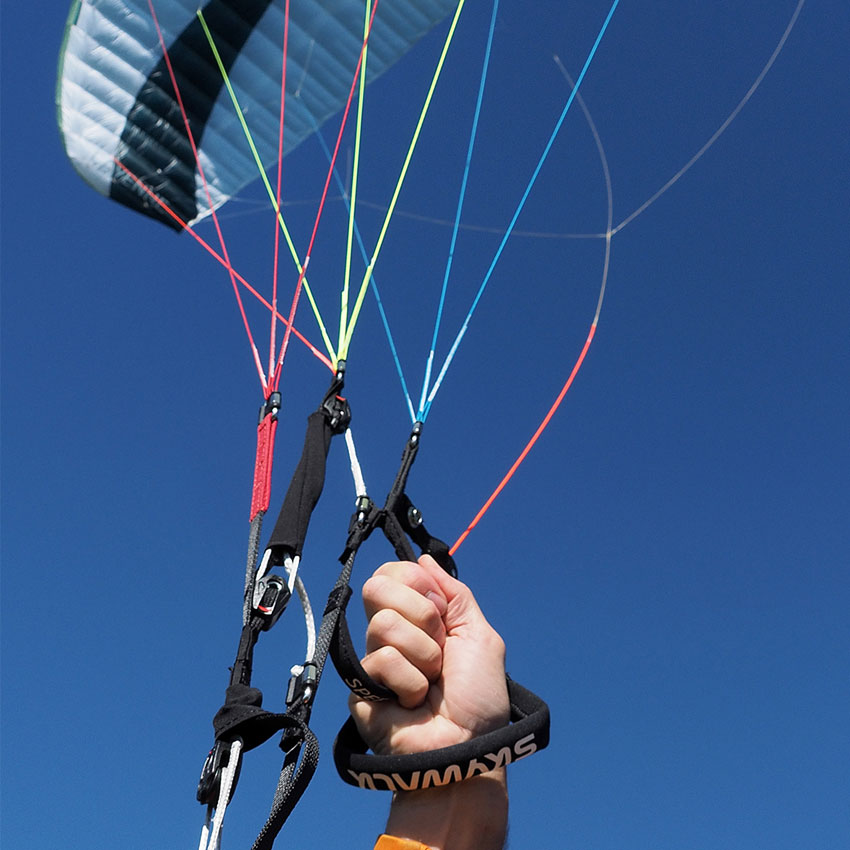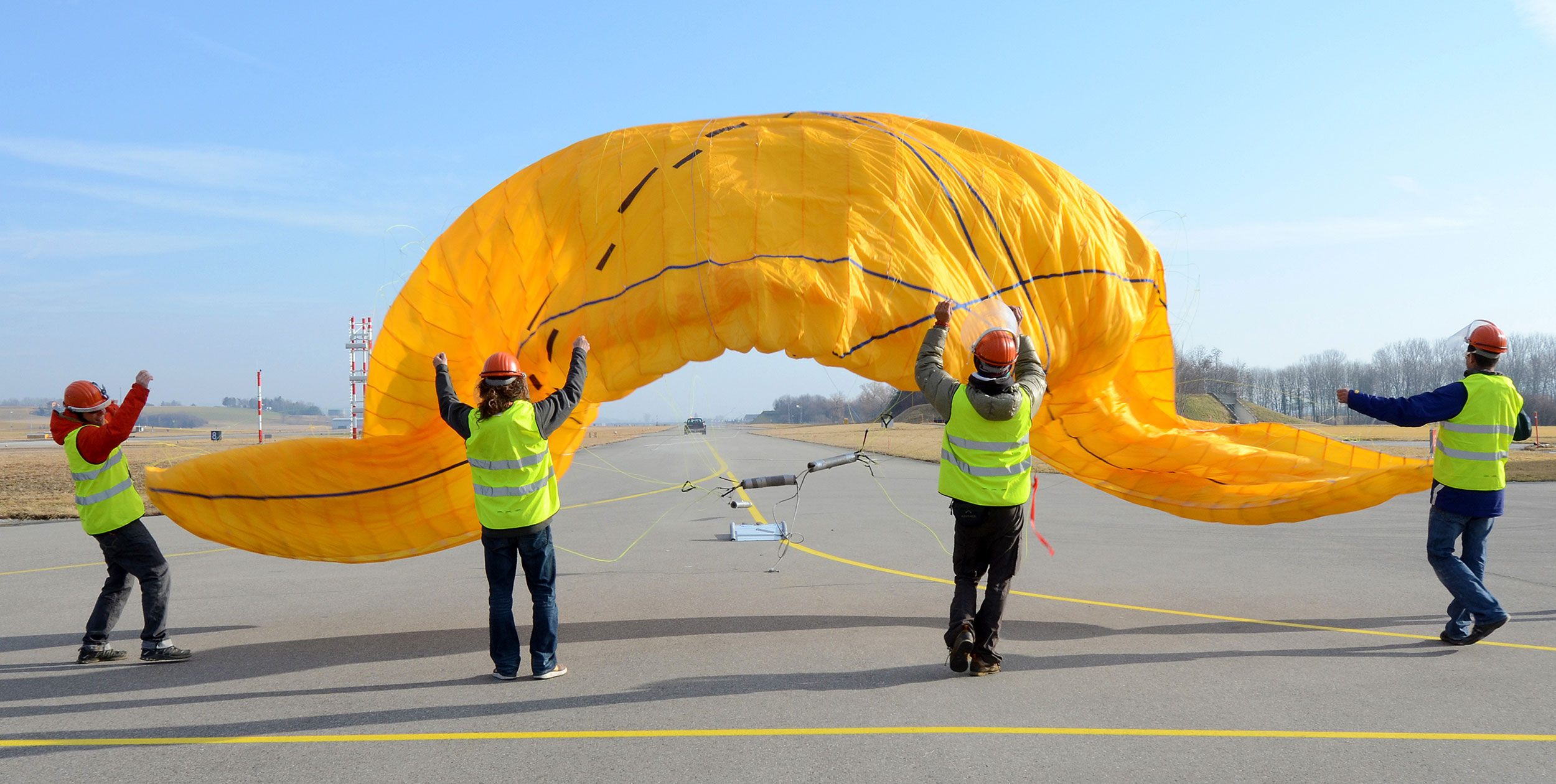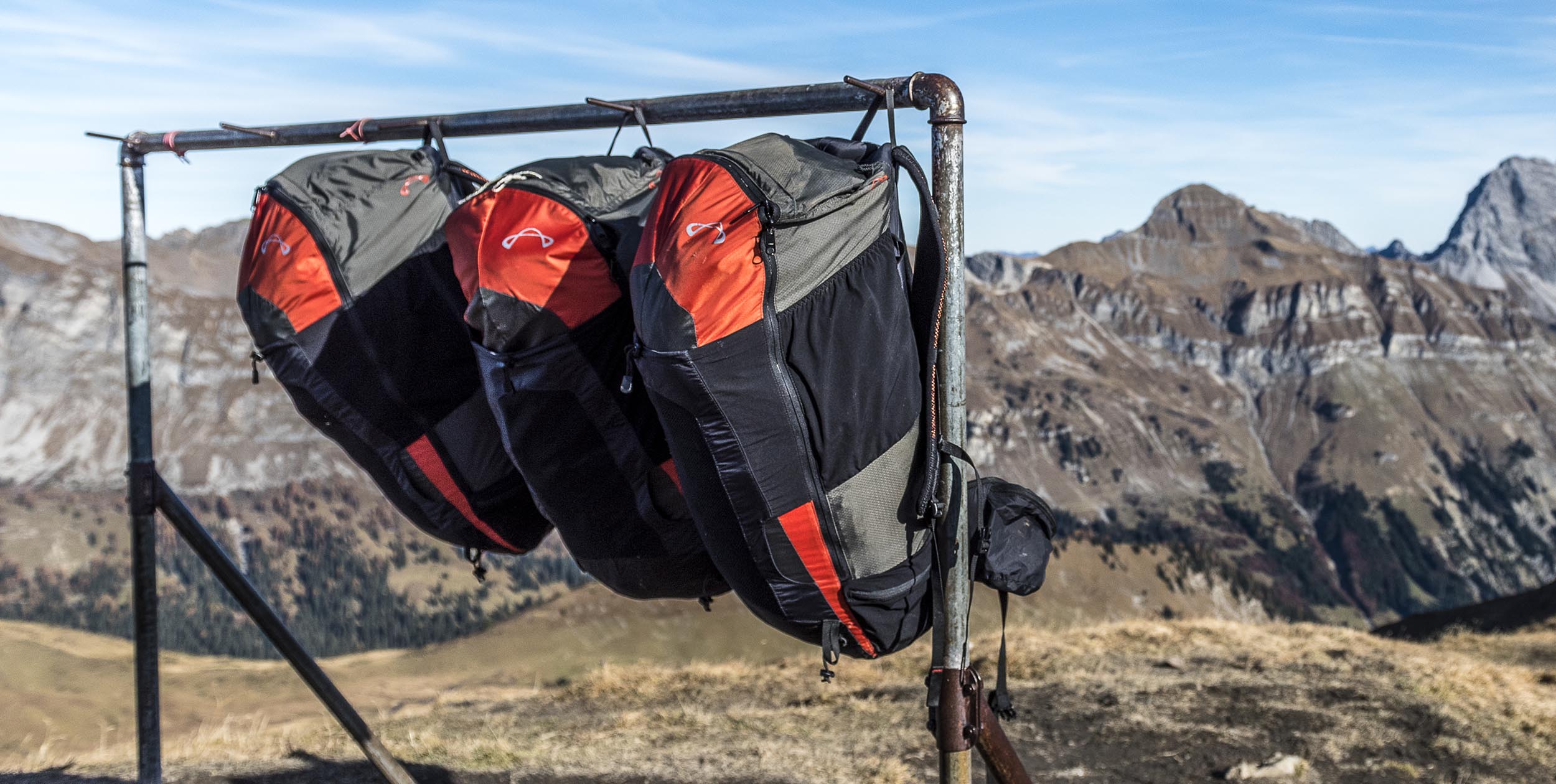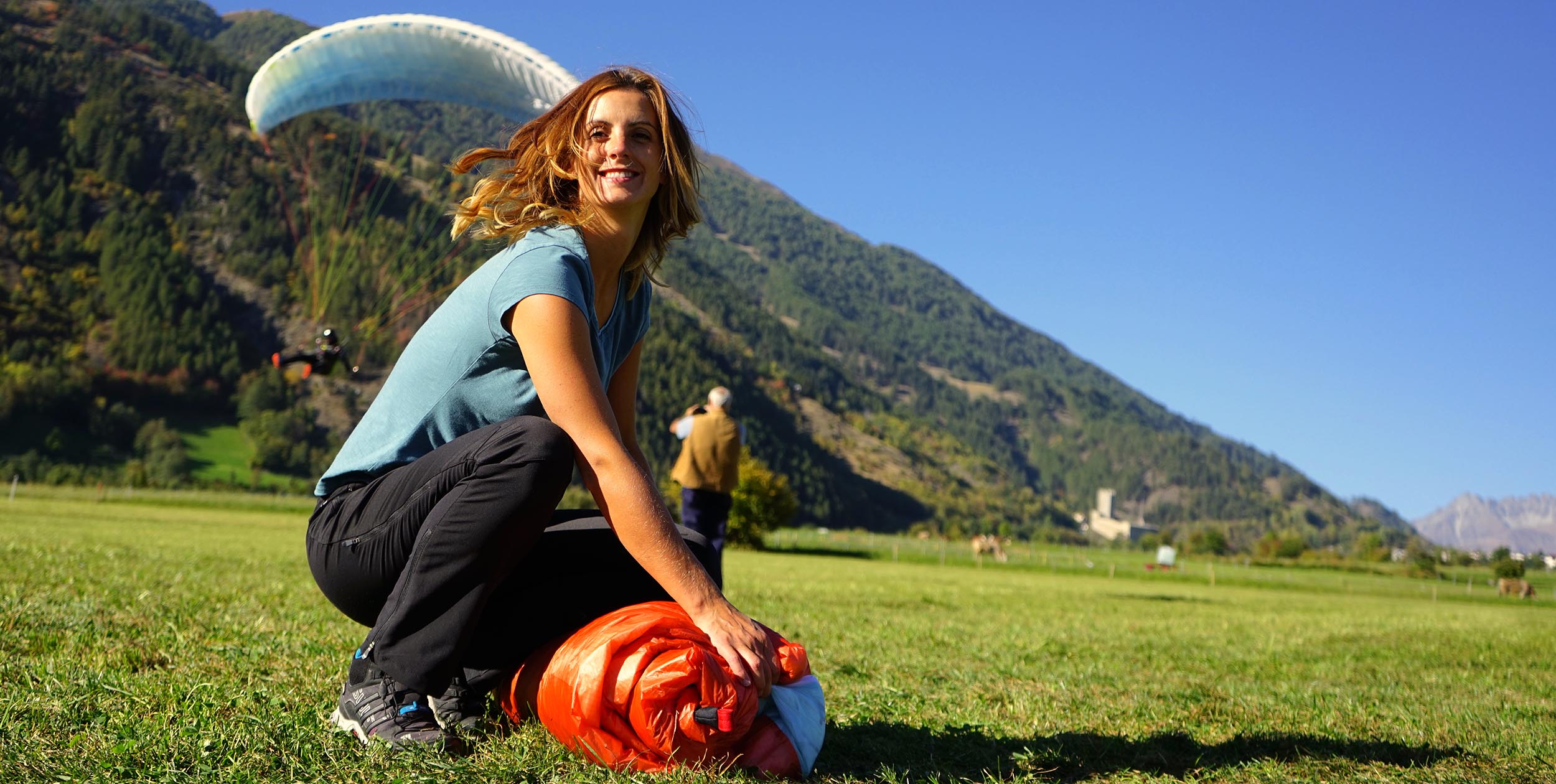From mini-ribs to Brummel hooks, Bastienne Wentzel deconstructs the paraglider and explains the jargon.
The main parts of a paraglider can be seen in the photo below:
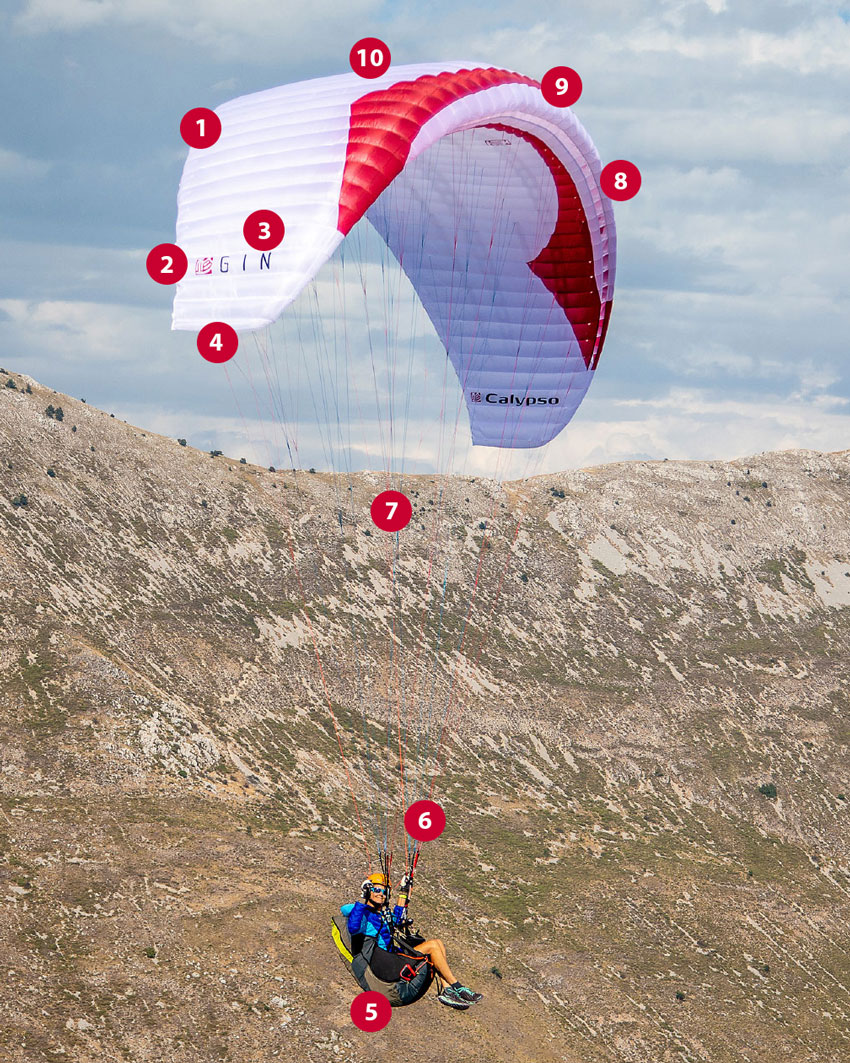
- TRAILING EDGE: Where the air flows together again and the brake lines are attached.
- BRAKE REEFING: How the brake lines are attached to multiple points on the trailing edge through loops and rings for better handling.
- RODS: Plastic or metal sticks that ensure the perfect shape of the aerofoil, from the leading edge sometimes all the way over the top.
- STABILO or stabiliser panel is the last cell at the tips. It influences the tip vortices and the stability of the canopy in flight.
- HARNESS: A comfortable seat made of strong webbing padded with cloth and filled with side and back protection.
- RISERS: Where the lines come together and connect to the harness. Made of strong, often colour-coded nylon or Dyneema webbing.
- LINES: Carry your weight and distribute it over the canopy. Totalling over 200m, the main lines split once or twice towards the canopy.
- CELL OPENINGS: Placed where the airflow hits the canopy. Many modern paragliders have a sharknose
- LEADING EDGE: An aerofoil shape with a rounded nose, the leading edge is ideally shaped to produce lift.
- CANOPY: Made from strong and light ripstop nylon with an airtight coating so the air does not leak through causing turbulence over the surface.
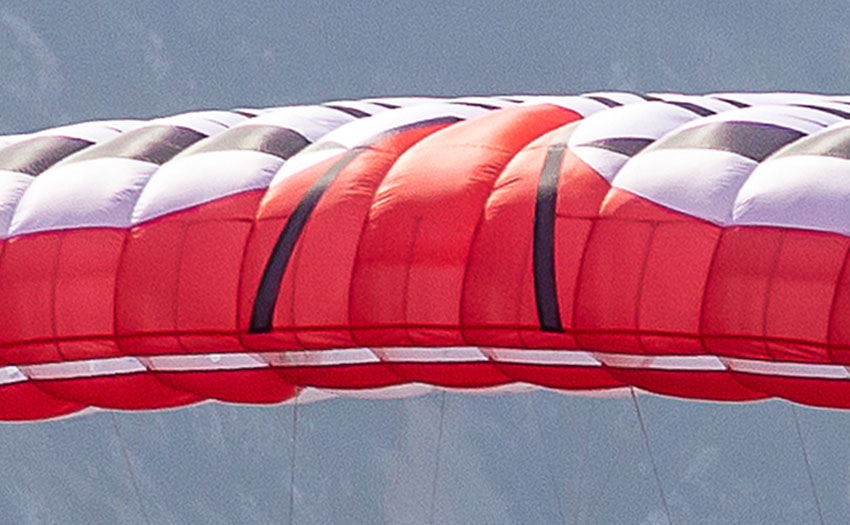
3D SHAPING
Enabled by computational design, 3D shaping ensures a very smooth surface especially at the leading edge without any ballooning. Manufacturers have different solutions such as extra spanwise seams or curved panels.

Sharknose
A specific shape of the cell openings where the lower surface is set back. Manufacturers say it gives better flying characteristics at low and high speeds.
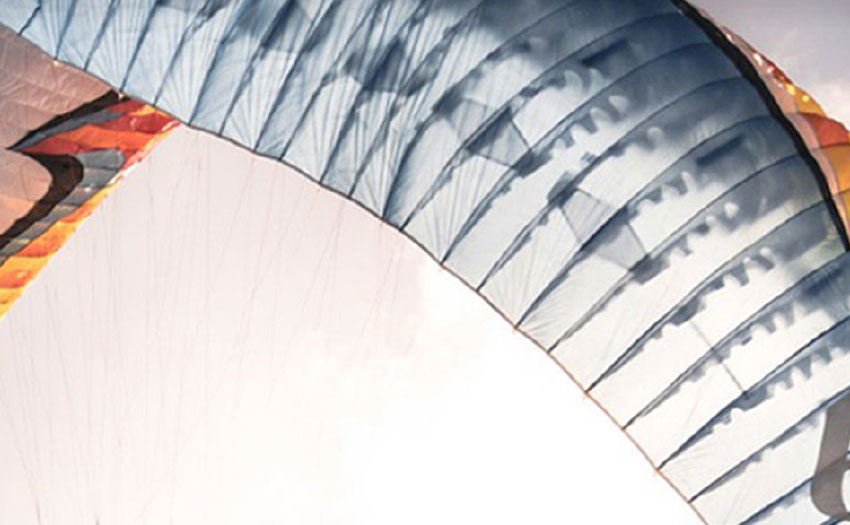
Internal Structure
Diagonal ribs spanning several cells and horizontal tape reinforcements make sure the cells don’t blow up like balloons, which would disturb the airflow creating drag. Holes decrease the weight.

LINES
These superfibres are made of aramid (Kevlar) or polyethylene (Dyneema). New developments mean they are stronger and thinner and last longer.
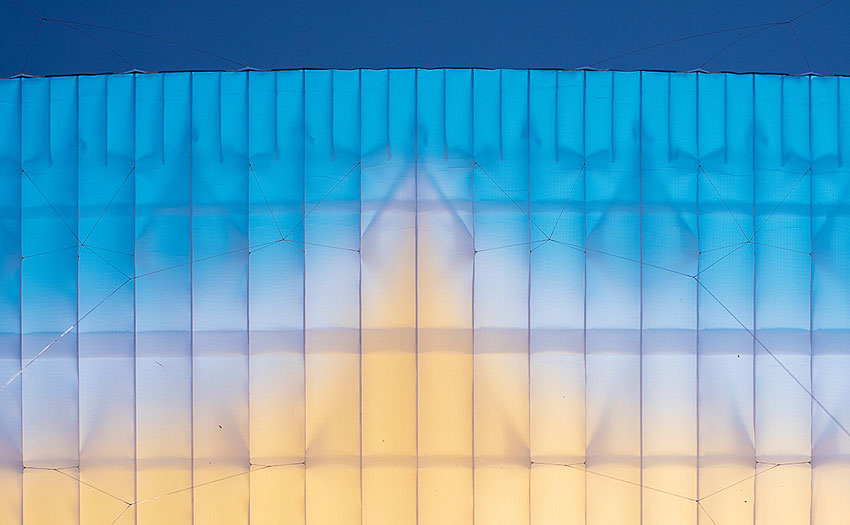
mini-ribs
Mini-ribs are extra ribs at the trailing edge that decrease ballooning, reducing drag and improving performance.
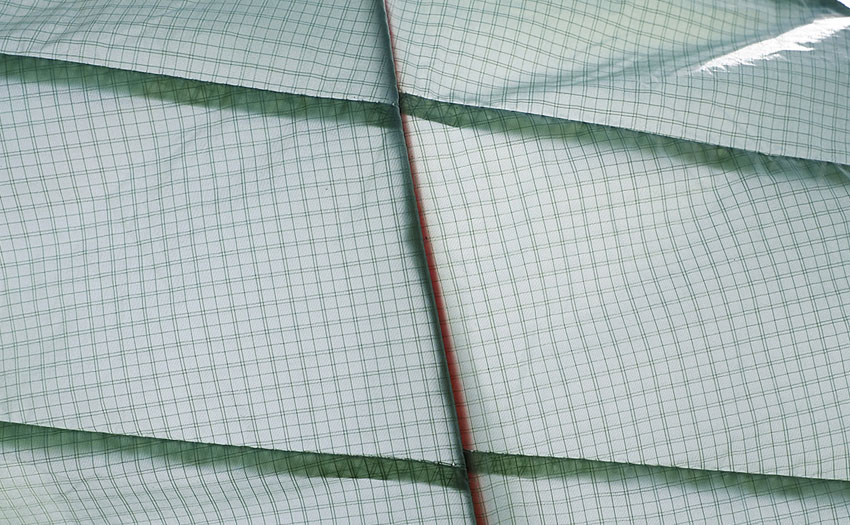
Ripstop fabric
Paragliders are made from coated ripstop nylon that is light and strong. It has a stronger thread weaved into it in little squares. This stops a small tear from ripping further.

AIRFLOW
Paragliders fly as well as they do nowadays because designers work hard to optimise their shape, surface and structure. A wing generates the best lift and the least drag – and therefore flies furthest – with a completely smooth surface: no ballooning cells, no creases because of stretching, fewer seams and fewer edges where airflow is turbulent. Using a technique called computational fluid dynamics, virtual prototypes can be designed and tested without having to build and fly them.
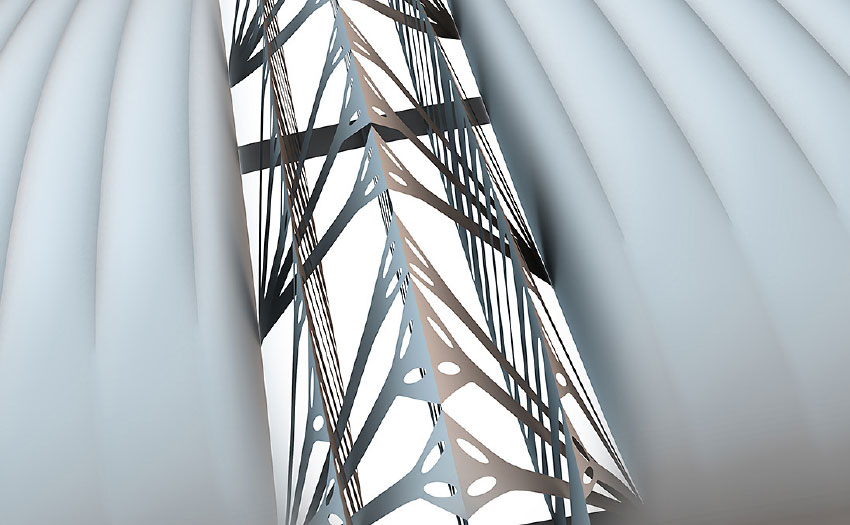
INTERNAL STRUCTURE
The shape of the canopy is largely determined by various internal reinforcements. Well known are rods, made of metals like nitinol which springs back into shape after bending, or plastics like nylon or PVC. Rods keep the leading edge and upper canopy in shape. Sports or performance gliders may have rods stretching across the chord. A newer development is C-wires. These are rods placed around the attachment points of the C-lines to support the weight there. Spanwise tapes and optimised diagonal ribs ensure solidity and structural integrity of the canopy.
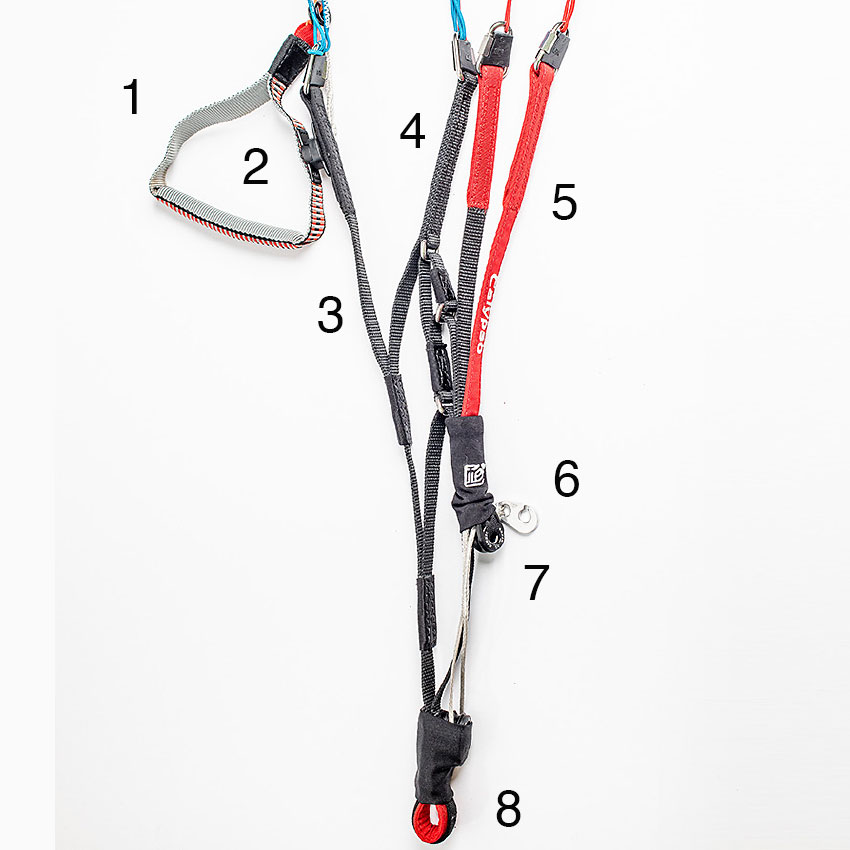
1 Brake handle, 2 Brake keeper, 3 rear riser, 4 B-riser, 5 Split A-riser, 6 Brummel hook, 7 Speed system pulley, 8 Hook-in point
c-steering
When flying with the speed bar engaged, it is inadvisable to use the brakes for control. That would be like braking and accelerating at the same time. A way to control your paraglider with the speed bar engaged is to use the rear risers. Increasingly, paragliders are equipped with a dedicated B/C-steering system which is lighter and more efficient to use than just pulling the rear risers. Pulling the dedicated loop or handle on the C-risers, an intricate system of pulleys, ensures that the canopy does not deform by engaging the B-risers as well.
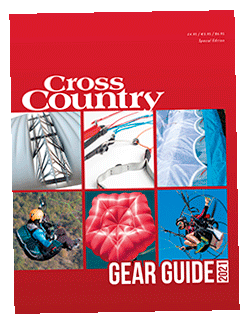
If you liked this article it was taken from the Cross Country Gear Guide 2021
You can buy the full guide in digital format or buy the printed Gear Guide here

